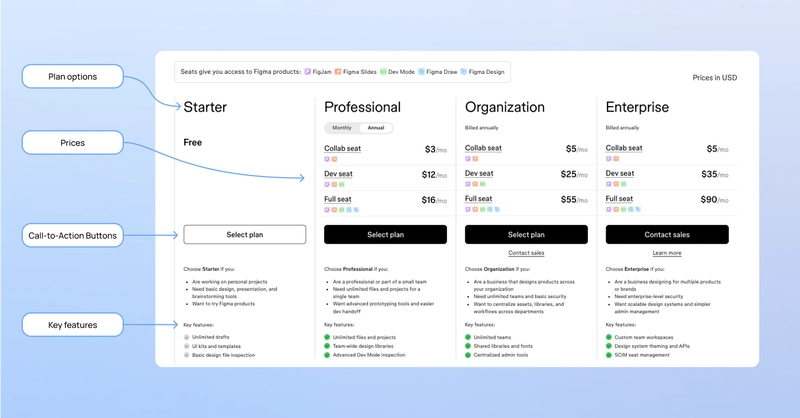Q-Orchestrator: My AI-Powered CLI Co-Pilot, Supercharged by Amazon Q Developer!
This is a submission for the Amazon Q Developer "Quack The Code" Challenge: Crushing the Command Line What I Built Q-Orchestrator (q-orch) is a Python-based command-line interface that acts as an intelligent assistant for developers. It leverages Amazon Q Developer to automate and assist with a variety of tasks that often consume valuable development time or require intricate knowledge. The core problem Q-Orchestrator aims to solve is reducing friction in the development workflow. It does this by: Intelligent Project Scaffolding: q-orch init-project --type python-api --features auth,database --name my_new_app Instead of manually creating directory structures, boilerplate files, and initial configurations, Q-Orchestrator uses Amazon Q to generate a foundational project structure (e.g., for a Python Flask/FastAPI app) with requested features like basic authentication stubs or SQLAlchemy model examples. Smart Script Generation: q-orch generate-script --task "create a bash script to backup my PostgreSQL database 'devdb' to an S3 bucket named 'my-backup-bucket' daily and remove backups older than 30 days" Q-Orchestrator takes a natural language description of a desired script, sends it to Amazon Q, and receives a functional script (bash, Python, etc.) ready for review and use. On-Demand Code Analysis & Refactoring Insights: q-orch analyze-code --file ./utils/parser.py --suggest refactors Point Q-Orchestrator at a code file, and it will use Amazon Q to provide insights into potential areas for refactoring, explain complex code blocks, or suggest performance improvements. Automated Documentation Stubbing: q-orch stub-docs --dir ./src --lang python This feature scans your source code directory, and with Q's help, generates basic docstring stubs for functions and classes, giving you a head start on documentation. "Explain This Command" on Steroids: q-orch explain "docker run -d -p 8080:80 --name web_server nginx" Ever stumbled upon a complex CLI command? Q-Orchestrator uses Amazon Q to break it down, explain each part, its purpose, and common use cases or pitfalls. The goal is to make developers feel like they have an expert pair programmer and sysadmin available right in their terminal! Demo --- TO BE UPDATED SOON --- Code Repository --- TO BE UPDATED SOON --- How I Used Amazon Q Developer Amazon Q Developer is the engine behind Q-Orchestrator. My CLI tool essentially acts as a user-friendly wrapper that formulates specific prompts and tasks for aws q (the Amazon Q Developer CLI) and then parses its responses to deliver functionality. Here's a breakdown: Core Interaction: Q-Orchestrator uses Python's subprocess module to execute aws q commands. For example, a simplified version of the script generation might involve: import subprocess import json def generate_script_with_q(task_description): # Note: The actual aws q command structure might differ. # This is a conceptual representation. cmd = [ "aws", "q", "generate-script", # Or a similar Q command for code/script gen "--language", "python", # Or detect from task_description "--prompt", task_description ] try: result = subprocess.run(cmd, capture_output=True, text=True, check=True) # Assuming Q returns JSON, but it might be plain text. # Adapt parsing accordingly. q_response = json.loads(result.stdout) return q_response.get("generatedScript", "Error: Script not found in response.") except subprocess.CalledProcessError as e: return f"Error from Amazon Q: {e.stderr}" except json.JSONDecodeError: return f"Error: Amazon Q returned non-JSON: {result.stdout}" Use code with caution. Python Prompt Engineering: The key was crafting effective prompts for Amazon Q. For project scaffolding, I experimented with prompts like: "Generate a Python FastAPI project structure for a REST API with basic JWT authentication and SQLAlchemy models for 'User' and 'Product' entities. Include main.py, models.py, auth_routes.py, and a requirements.txt." Q-Orchestrator then translates user flags (--features auth) into parts of these detailed prompts. For script generation, the user's natural language input is often passed directly, sometimes with added context like "Generate a [language] script that..." For code analysis, I'd send code snippets to Q with prompts like: "Analyze the following Python code for potential refactoring to improve readability and maintainability: [CODE_SNIPPET]". Parsing Q's Output: Amazon Q can return structured data (like JSON for some commands) or plain text. Q-Orchestrator needs to intelligently parse this. For generated code, it's often extracting a specific code block. For explanations, it's usually presenting the formatted text.

This is a submission for the Amazon Q Developer "Quack The Code" Challenge: Crushing the Command Line
What I Built
Q-Orchestrator (q-orch) is a Python-based command-line interface that acts as an intelligent assistant for developers. It leverages Amazon Q Developer to automate and assist with a variety of tasks that often consume valuable development time or require intricate knowledge.
The core problem Q-Orchestrator aims to solve is reducing friction in the development workflow. It does this by:
Intelligent Project Scaffolding:
q-orch init-project --type python-api --features auth,database --name my_new_app
Instead of manually creating directory structures, boilerplate files, and initial configurations, Q-Orchestrator uses Amazon Q to generate a foundational project structure (e.g., for a Python Flask/FastAPI app) with requested features like basic authentication stubs or SQLAlchemy model examples.
Smart Script Generation:
q-orch generate-script --task "create a bash script to backup my PostgreSQL database 'devdb' to an S3 bucket named 'my-backup-bucket' daily and remove backups older than 30 days"
Q-Orchestrator takes a natural language description of a desired script, sends it to Amazon Q, and receives a functional script (bash, Python, etc.) ready for review and use.
On-Demand Code Analysis & Refactoring Insights:
q-orch analyze-code --file ./utils/parser.py --suggest refactors
Point Q-Orchestrator at a code file, and it will use Amazon Q to provide insights into potential areas for refactoring, explain complex code blocks, or suggest performance improvements.
Automated Documentation Stubbing:
q-orch stub-docs --dir ./src --lang python
This feature scans your source code directory, and with Q's help, generates basic docstring stubs for functions and classes, giving you a head start on documentation.
"Explain This Command" on Steroids:
q-orch explain "docker run -d -p 8080:80 --name web_server nginx"
Ever stumbled upon a complex CLI command? Q-Orchestrator uses Amazon Q to break it down, explain each part, its purpose, and common use cases or pitfalls.
The goal is to make developers feel like they have an expert pair programmer and sysadmin available right in their terminal!
Demo
--- TO BE UPDATED SOON ---
Code Repository
--- TO BE UPDATED SOON ---
How I Used Amazon Q Developer
Amazon Q Developer is the engine behind Q-Orchestrator. My CLI tool essentially acts as a user-friendly wrapper that formulates specific prompts and tasks for aws q (the Amazon Q Developer CLI) and then parses its responses to deliver functionality.
Here's a breakdown:
Core Interaction: Q-Orchestrator uses Python's subprocess module to execute aws q commands. For example, a simplified version of the script generation might involve:
import subprocess
import json
def generate_script_with_q(task_description):
# Note: The actual aws q command structure might differ.
# This is a conceptual representation.
cmd = [
"aws", "q", "generate-script", # Or a similar Q command for code/script gen
"--language", "python", # Or detect from task_description
"--prompt", task_description
]
try:
result = subprocess.run(cmd, capture_output=True, text=True, check=True)
# Assuming Q returns JSON, but it might be plain text.
# Adapt parsing accordingly.
q_response = json.loads(result.stdout)
return q_response.get("generatedScript", "Error: Script not found in response.")
except subprocess.CalledProcessError as e:
return f"Error from Amazon Q: {e.stderr}"
except json.JSONDecodeError:
return f"Error: Amazon Q returned non-JSON: {result.stdout}"
Use code with caution.
Python
Prompt Engineering: The key was crafting effective prompts for Amazon Q.
For project scaffolding, I experimented with prompts like: "Generate a Python FastAPI project structure for a REST API with basic JWT authentication and SQLAlchemy models for 'User' and 'Product' entities. Include main.py, models.py, auth_routes.py, and a requirements.txt." Q-Orchestrator then translates user flags (--features auth) into parts of these detailed prompts.
For script generation, the user's natural language input is often passed directly, sometimes with added context like "Generate a [language] script that..."
For code analysis, I'd send code snippets to Q with prompts like: "Analyze the following Python code for potential refactoring to improve readability and maintainability: [CODE_SNIPPET]".
Parsing Q's Output: Amazon Q can return structured data (like JSON for some commands) or plain text. Q-Orchestrator needs to intelligently parse this. For generated code, it's often extracting a specific code block. For explanations, it's usually presenting the formatted text.














































































































































































![[The AI Show Episode 156]: AI Answers - Data Privacy, AI Roadmaps, Regulated Industries, Selling AI to the C-Suite & Change Management](https://www.marketingaiinstitute.com/hubfs/ep%20156%20cover.png)
![[The AI Show Episode 155]: The New Jobs AI Will Create, Amazon CEO: AI Will Cut Jobs, Your Brain on ChatGPT, Possible OpenAI-Microsoft Breakup & Veo 3 IP Issues](https://www.marketingaiinstitute.com/hubfs/ep%20155%20cover.png)












































































































































































































































.jpg?width=1920&height=1920&fit=bounds&quality=70&format=jpg&auto=webp#)

























_Michael_Burrell_Alamy.jpg?width=1280&auto=webp&quality=80&disable=upscale#)





























































































































































































